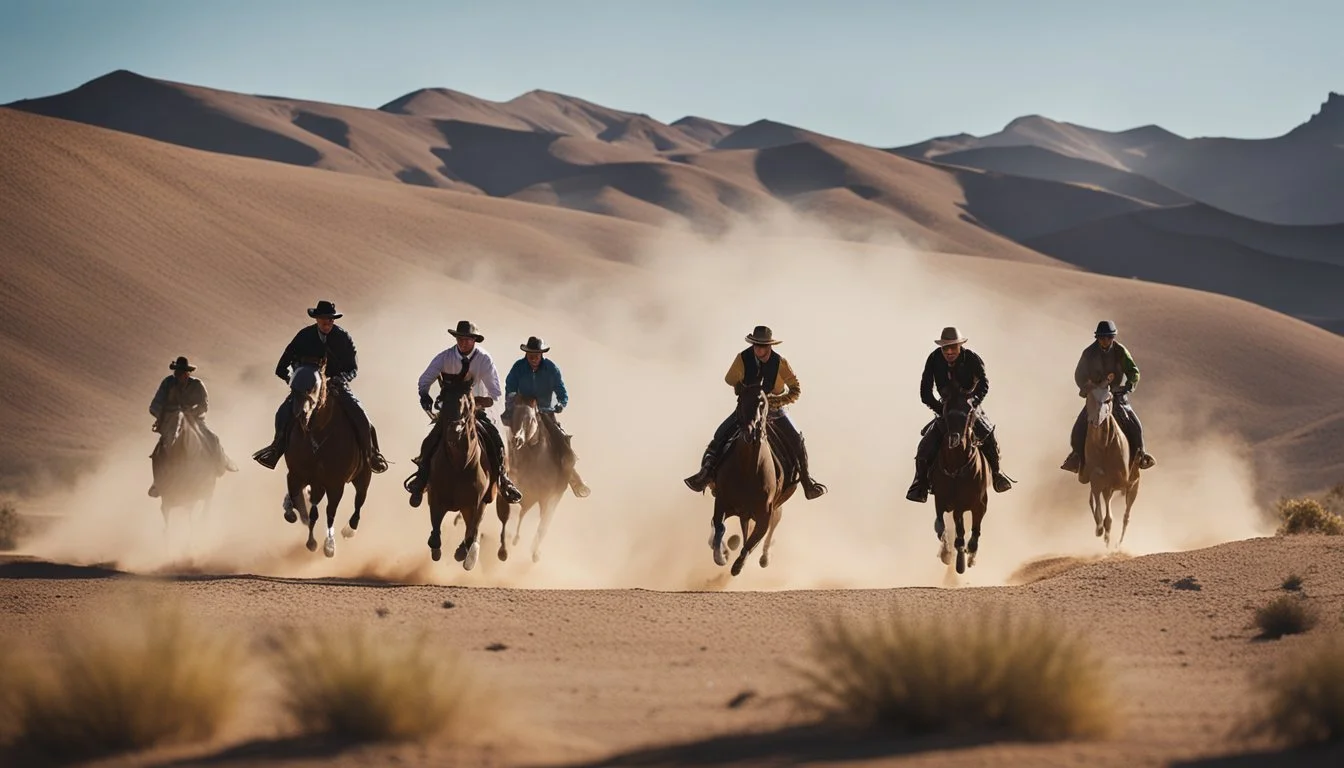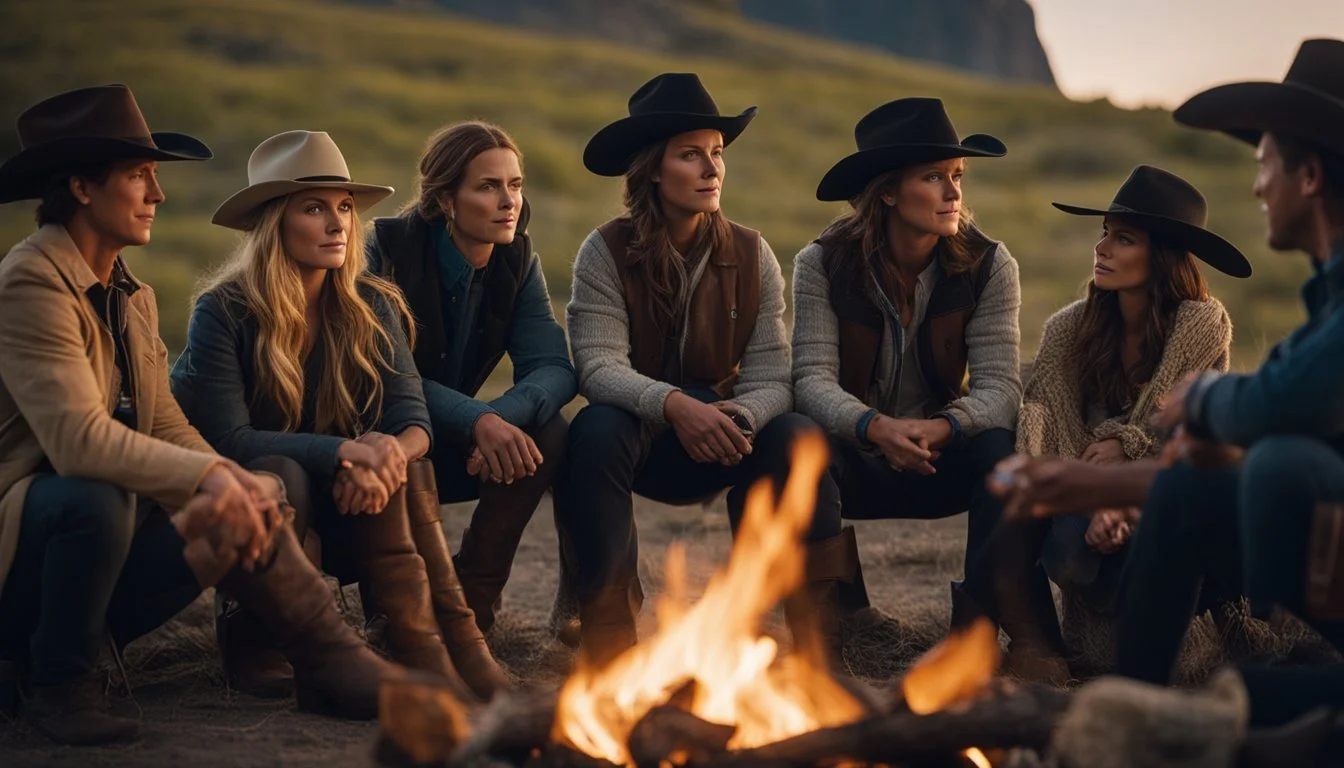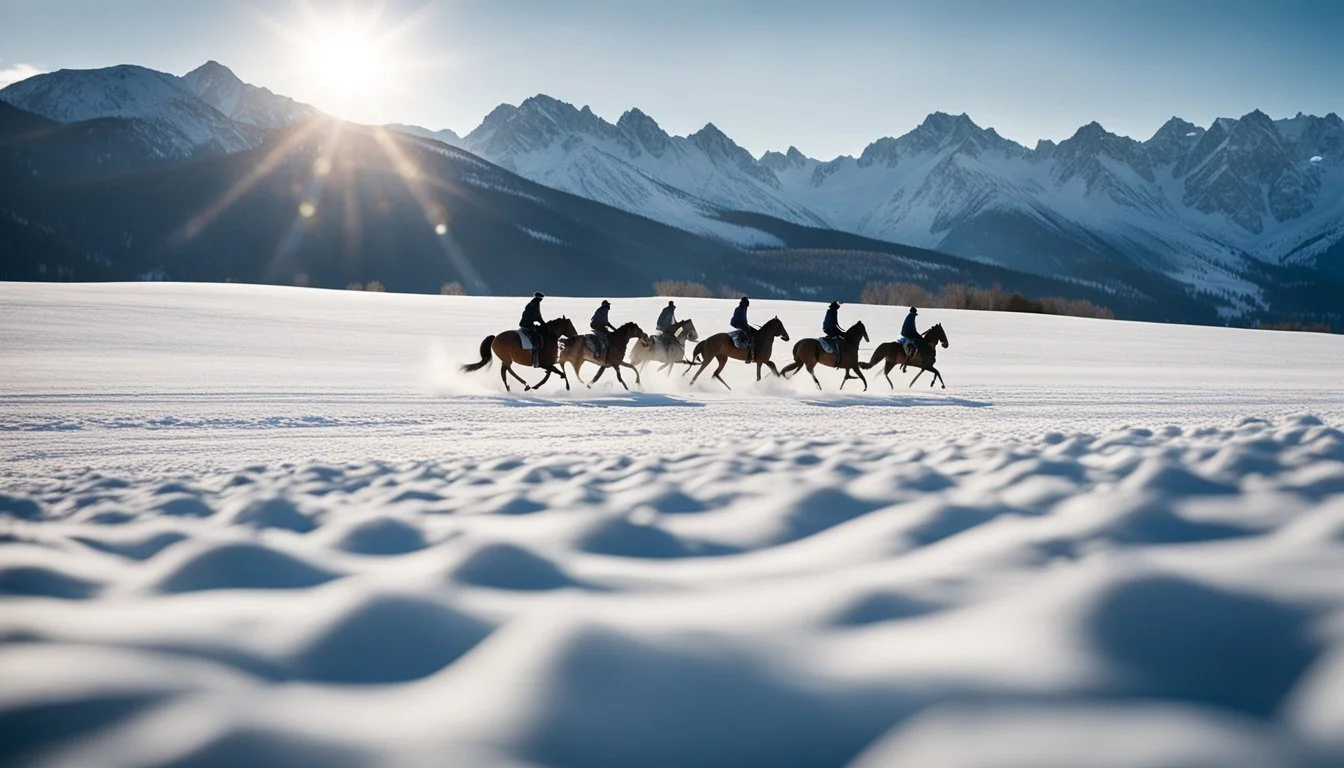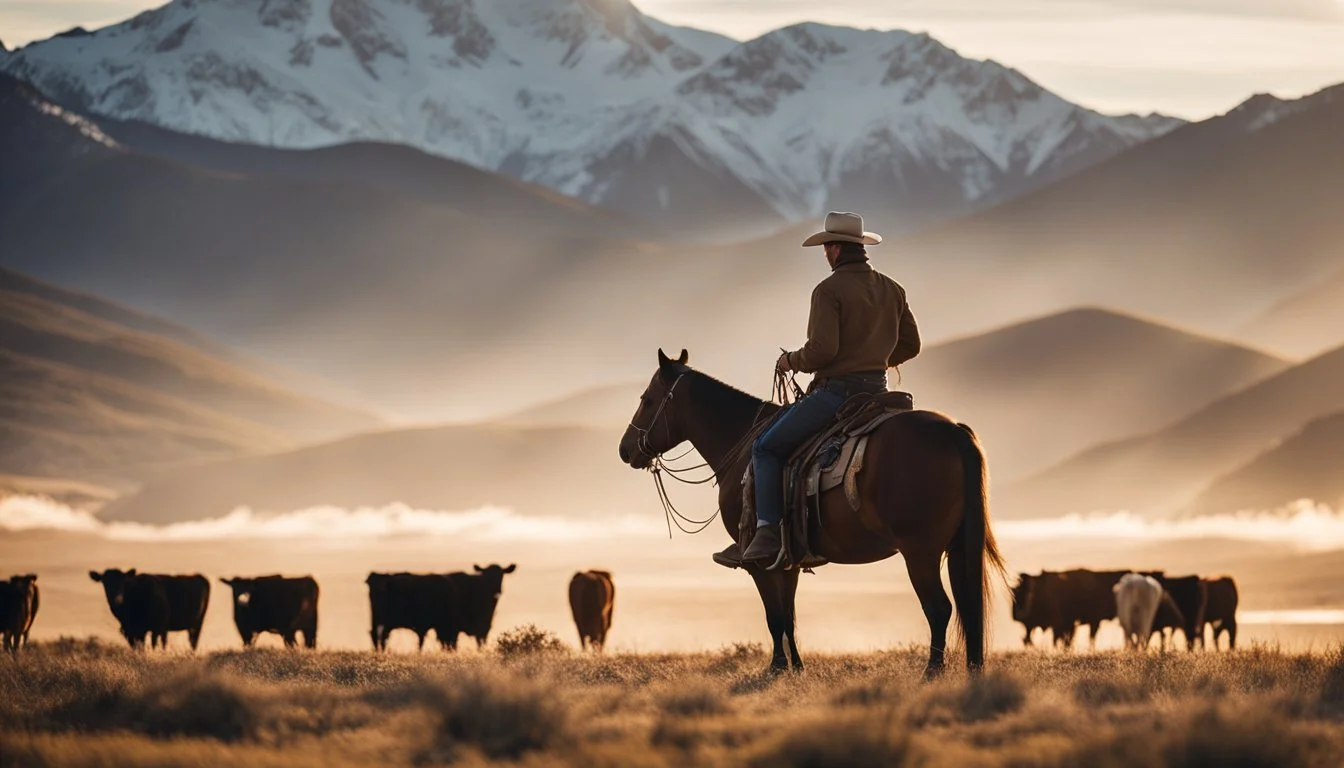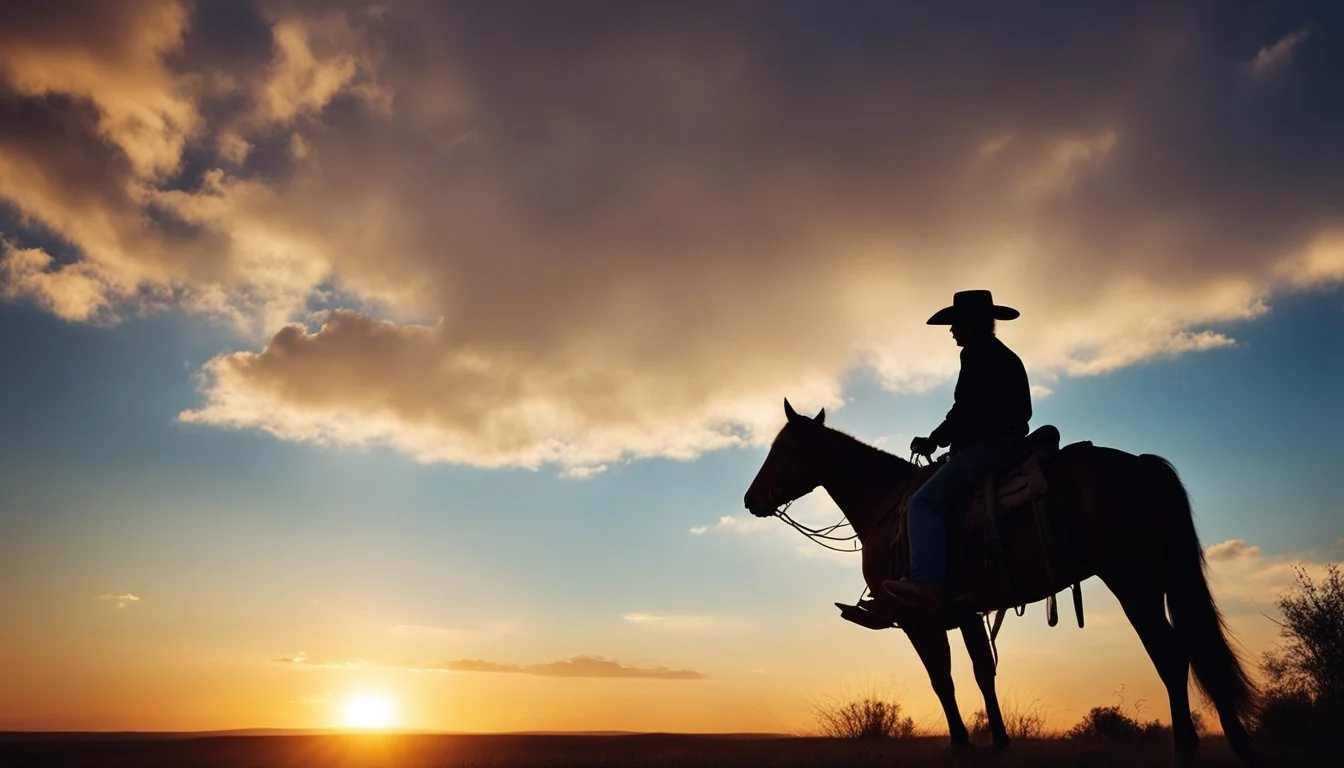Yellowstone's Hidden Truth What If It Was Set Anywhere But Montana
Yellowstone, the hit TV series created by Taylor Sheridan and starring Kevin Costner, has become synonymous with Montana's rugged landscapes and ranching culture. The show's depiction of the Dutton family's sprawling ranch has captivated audiences worldwide, showcasing the state's natural beauty and complex social dynamics.
If Yellowstone were set in a different location, it would likely lose much of its distinctive charm and authenticity that comes from its Montana setting. The state's vast open spaces, towering mountains, and rich cowboy heritage provide a unique backdrop that is integral to the show's storylines and character development. John Dutton's fierce determination to protect his land resonates deeply with the real-world challenges faced by Montana ranchers.
While other states might offer similar landscapes, Montana's specific blend of natural wonders, including Glacier National Park and the eastern prairies, contribute to Yellowstone's visual appeal. The show's success has not only boosted tourism in Montana but also sparked conversations about land use, conservation, and the changing face of the American West. Paramount's decision to set the series in Montana has undoubtedly played a crucial role in its widespread popularity and cultural impact.
Alternate Setting for 'Yellowstone'
Relocating 'Yellowstone' from Montana would fundamentally alter the show's identity and themes. The series' connection to its setting runs deep, shaping characters, conflicts, and visual appeal.
Potential Locations Beyond Montana
Utah emerges as a prime alternative for 'Yellowstone'. Its diverse landscapes mirror Montana's rugged beauty, offering similar visual grandeur. The state's rich cowboy culture and ranching heritage align with the show's themes. Wyoming, with its expansive prairies and mountain ranges, could provide an authentic Western backdrop. Colorado's Rocky Mountains and ranch lands present another viable option, capturing the essence of the American frontier.
Idaho's vast wilderness and Idaho Falls area could serve as a compelling setting, maintaining the show's remote feel. Each location would bring unique geographical features and local histories, influencing storylines and character backgrounds.
Impacts on the Narrative
A change in setting would ripple through 'Yellowstone's' narrative fabric. Land disputes might shift focus from cattle ranching to other industries like mining or tourism. Characters' connections to the land would evolve, reflecting new regional histories and challenges.
Local politics and power dynamics would transform, potentially altering the Dutton family's position and rivals. Interactions with Native American tribes would change, introducing different reservations and cultural contexts. The show's exploration of the modern West versus tradition could take on new dimensions in a different state's socio-economic landscape.
Cultural and Geographical Influence
A new setting would infuse 'Yellowstone' with distinct cultural flavors. Utah's Mormon heritage could add layers to character backgrounds and community dynamics. Wyoming's energy industry might become a central conflict, replacing Montana's focus on land preservation.
Geographical changes would impact ranch operations, wildlife encounters, and natural disasters featured in storylines. Colorado's ski tourism could introduce new adversaries for the Duttons. Idaho's potato farming legacy might influence ranch diversification plots.
The essence of the American West would remain, but through a different lens. Ranch hands' skills might adapt to regional practices. Land developers' motivations could shift based on local economic drivers. The show's portrayal of Western identity and community would evolve, reflecting the chosen state's unique blend of tradition and progress.
Casting and Characters
Relocating Yellowstone from Montana would necessitate significant adjustments to the show's cast and characters. These changes would impact both the existing roles and introduce new dynamics to reflect the chosen setting.
Adaptation of Characters to New Settings
The Dutton family would require careful reimagining to fit a different locale. John Dutton's character might shift from a cattle rancher to a different type of landowner, depending on the new setting. Beth Dutton's fierce personality could translate to various environments, but her backstory and motivations would need tweaking. Kayce Dutton's military background could remain, but his connection to the land would change.
The Broken Rock Indian Reservation storyline would need a complete overhaul. This could involve introducing a different indigenous community relevant to the new location. The show's cowboys might transform into other types of workers specific to the region's primary industry.
New Dynamics and Relationships
A change in setting would create fresh conflicts and alliances. Land developers' goals would shift to match the new area's economic interests. The community surrounding the Dutton property would reflect local culture and concerns.
New characters could emerge to represent region-specific roles. For example, if set in a coastal area, fishermen or marine conservationists might play key parts. In an urban setting, city officials or real estate moguls could become central figures.
The show's core themes of family, power, and land preservation would remain. However, the specific challenges and rivalries would adapt to reflect the unique pressures of the new environment.
Production Shifts
The relocation of Yellowstone's filming from Utah to Montana brought significant changes to the production process and local economies. This move aimed to enhance authenticity but also presented new challenges and opportunities.
Challenges in New Environments
Montana's rugged terrain and unpredictable weather posed unique obstacles for the Yellowstone production team. Cinematographers had to adapt their techniques to capture the state's vast landscapes and dramatic skies. The crew faced logistical hurdles in transporting equipment to remote locations. Local wildlife sometimes interrupted filming, requiring patience and flexibility. Despite these challenges, the authentic Montana backdrop added depth to the show's visual storytelling.
Economic Impact of Production
Yellowstone's move to Montana resulted in substantial economic benefits for the state. Production spending injected millions into local economies, creating jobs and boosting businesses. The tourism industry saw a marked increase, with fans flocking to visit filming locations. Real estate prices in featured areas rose, leading to concerns about gentrification in rural Montana communities. The influx of visitors also raised questions about conservation efforts in popular filming spots. State officials worked to balance economic gains with preserving Montana's natural beauty and rural character.
Social and Environmental Themes
"Yellowstone" explores complex issues facing rural communities and ecosystems. The show's setting plays a crucial role in shaping its social and environmental narratives.
Representation of Rural Life
The series portrays the challenges of maintaining a traditional ranching lifestyle in modern America. Cattle ranches symbolize a cultural identity deeply rooted in the region's history. Cowboys embody values of hard work and self-reliance.
Rural Montana faces economic pressures from outside influences. The show highlights tensions between locals and wealthy newcomers seeking to develop the land. This conflict reflects real concerns about changing demographics and land use in rural areas.
The fictional Dutton Ranch serves as a microcosm for broader rural issues. It depicts struggles with inheritance taxes, land development pressures, and maintaining family legacies.
Conservation and Wildlife
Yellowstone National Park plays a central role in the show's environmental themes. The series showcases the park's iconic landscapes and diverse wildlife, including bison and wolves.
Conservation efforts often clash with ranching interests. The show explores conflicts between protecting endangered species and maintaining traditional livelihoods. Wolves, in particular, represent a contentious issue as their reintroduction impacts local ranchers.
Water rights and the health of the Yellowstone River are key environmental concerns. The series touches on debates over resource management and the balance between human needs and ecosystem preservation.
Paradise Valley serves as a backdrop for discussions on land conservation versus development. The show portrays efforts to preserve open spaces and wildlife corridors against encroaching urbanization.
Reception and Influence
Yellowstone's Montana setting has been integral to its success and cultural impact. The show's portrayal of the American West has resonated strongly with viewers and shaped perceptions of the region.
Impact on Viewers' Perception
Yellowstone has significantly influenced how audiences view Montana and ranch life. The show's depiction of vast landscapes, rugged mountains, and sprawling ranches has sparked increased interest in the state.
Tourism to Montana has seen a notable uptick since Yellowstone's debut. Cities like Bozeman and Billings have experienced growth in visitors seeking to experience the "Yellowstone lifestyle" firsthand.
The series has also shed light on complex issues facing the modern American West, including land disputes, Native American rights, and the challenges of maintaining traditional ranching practices.
Potential for New Storylines
A shift away from Montana could open up fresh narrative possibilities for Yellowstone. New locations might introduce different regional conflicts and cultural dynamics.
Spin-offs could explore varied settings while maintaining the show's core themes of family, power, and land ownership. This could broaden the franchise's appeal and showcase diverse aspects of American ranch life.
Moving the setting might allow for deeper exploration of issues like water rights, urban expansion, or conflicts with different types of land use, providing rich material for character development and plot twists.
Economic and Real Estate Factors
The economic and real estate landscape of Montana has shifted significantly due to the popularity of Yellowstone. Property values have soared, local economies have been transformed, and demographic changes have reshaped communities.
Gentrification and Land Ownership
Montana's real estate market has experienced unprecedented growth. In Bozeman, the median single-family home price has skyrocketed. Gallatin County and Park County have seen an influx of wealthy buyers seeking their own slice of the Yellowstone lifestyle.
This surge in demand has led to gentrification in areas like Paradise Valley. Long-time residents face challenges as property taxes increase and affordable housing becomes scarce. Cattle ranches, once the backbone of the region, are being sold to developers or wealthy individuals.
Livingston, a small town featured prominently in the show, has become a hot spot for real estate investment. Local character is at risk as traditional businesses are replaced by upscale boutiques and restaurants catering to new residents and tourists.
Influence on Local Economy
The Yellowstone effect has boosted Montana's tourism industry. Visitor numbers to Yellowstone National Park have increased, with fans eager to experience the landscapes showcased in the series. This influx has created new jobs in hospitality, retail, and outdoor recreation sectors.
Local businesses in Bozeman and surrounding areas have seen increased revenue. However, the economic benefits are not evenly distributed. Some long-standing industries, like agriculture, face pressure as land use shifts away from traditional practices.
The show has also sparked interest in Montana's ranching culture. Dude ranches and western-themed experiences have gained popularity, creating new revenue streams for some landowners. This trend has both preserved and commodified aspects of Montana's heritage.
Conclusion
Yellowstone's Montana setting is integral to its identity and appeal. The show's cultural impact stems largely from its portrayal of the state's rugged landscapes and ranching lifestyle.
Moving the series to another location would fundamentally alter its essence. The wide-open spaces and natural beauty of Montana provide a unique backdrop that cannot be easily replicated elsewhere.
The conservation themes explored in Yellowstone are deeply tied to Montana's environmental challenges. Relocating the story would likely diminish this important aspect of the show.
Yellowstone has become synonymous with Montana in popular culture. It has boosted tourism and interest in the state's history and way of life.
While a hypothetical non-Montana version of Yellowstone might find success, it would be a drastically different show. The authentic Montana setting is a character in itself, shaping the narrative and characters in profound ways.

